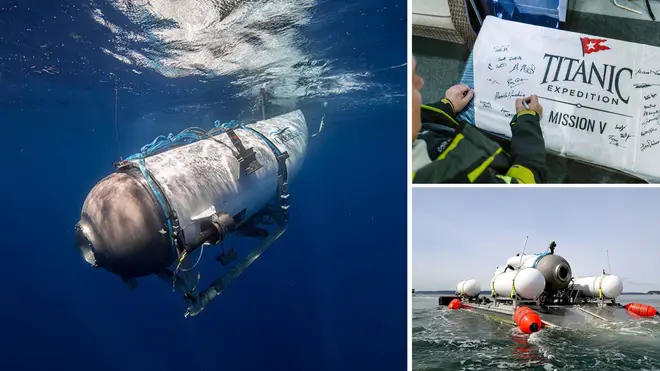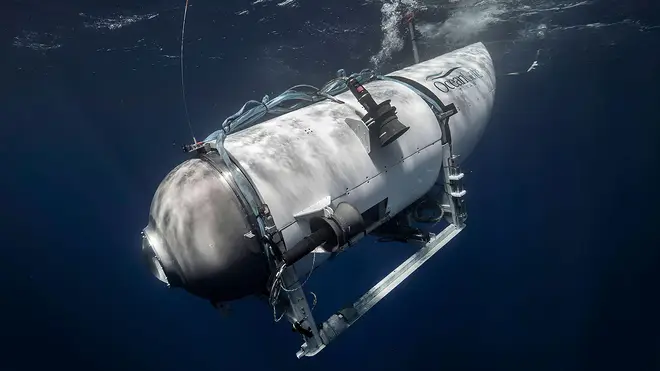
Paul Brand 10am - 12pm
17 July 2023, 09:57 | Updated: 17 July 2023, 10:14

A series of cost-cutting measures and risky design choices may have contributed to the catastrophic implosion of OceanGate's Titan submersible, experts have suggested.
Five people died on the Titan's sub in June as they journeyed to see the Titanic's wreckage, including the company's CEO Stockton Rush.
While an investigation into the implosion is under way, some design experts have analysed the doomed sub's design.
That includes the decision to use carbon fibre to design up the sub's hull (the main body of a ship), as well as Mr Rush's apparent disregard for safety.

One major concern over the sub's design centres around the hull.
The Titan's hull was designed to be shaped like a pill, rather than a more standard sphere shape.
This is was in an attempt to fit more people inside to join the $250,000 trip to see the Titanic wreckage.
The unusual shape of the hull may have caused pressure to distribute disproportionately, which may have caused it to 'collapse like a soda can'.
In addition, the hull was designed with carbon fibre, rather than titanium - a cost-cutting move, the New York Times reported.
However, the carbon fibre hull was attached to other titanium materials, making the two harder to bond.
Under water, carbon fibre would compress at a quicker rate than titanium, placing increased pressure on the glue joints holding the two materials together.
Tim Foecke, a retired forensic metallurgist, said he was "very surprised" by the decision to user carbon fibre, since it would have been subject to compression under water, making an implosion more likely.

Another concern include Mr Rush's decision not to receive certification for the sub's design.
Speaking in a documentary, the CEO said: "You are remembered for the rules you break, and I’ve broken some rules to make this. The carbon fibre and titanium — there’s a rule you don’t do that. Well, I did."
In addition, the hull's carbon fibre material - typically used in aerospace design - tends to be lighter.
As well as the pill shape, this allowed more passengers to be carried onboard.
Mr Rush, who died on the sub, said earlier this year: "This weight reduction allows us to carry a significantly greater payload, which we use to carry five crew members."
Expeditions on the Titan sub cost $250,000, typically lasting around eight hours.
Five people died in the catastrophic implosion in June, including Mr Rush, British billionaire Hamish Harding, French explorer Paul Henry Nargeolet, businessman Shahzada Dawood and his son, Suleman.